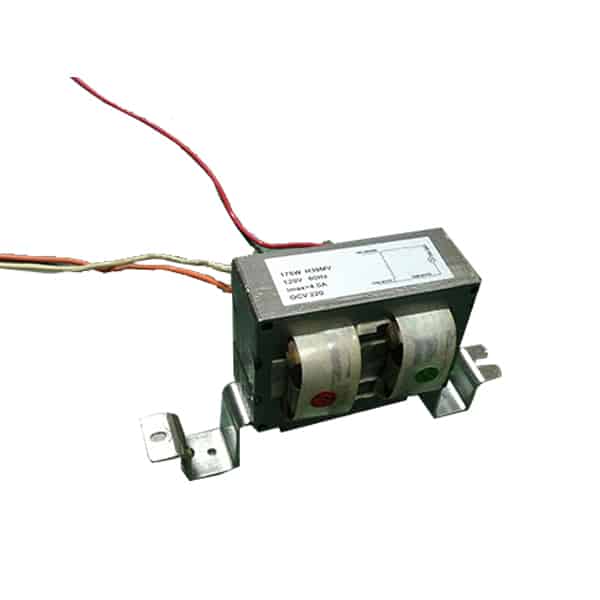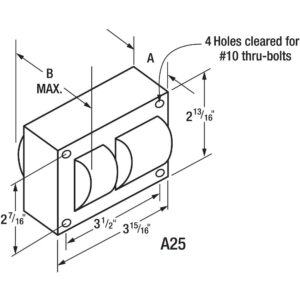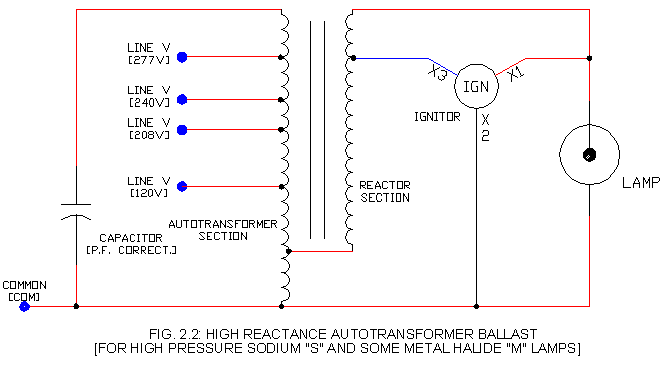Mercury vapor ballasts control the current to start and operate the lamp properly. Without it, the lamp can overheat and fail.
An HID mercury vapor ballast regulates the high initial voltage needed to start the lamp and stabilizes the current during operation to ensure consistent performance.
Now, let’s get into the technical details of how a mercury vapor ballast works and the different types of HID ballasts.
Can you run HID without a ballast?
No, you cannot run an HID (High-Intensity Discharge) lamp without a ballast. The ballast is essential because it regulates the current flow to the lamp and provides the initial high voltage necessary to start the arc. HID lamps operate at very high voltages and without a ballast to control this, the lamp would draw too much current, resulting in overheating and possible destruction of the lamp.
The ballast ensures that the HID lamp operates at the correct voltage and current, thus extending its lifespan and maintaining safe operation. Without a ballast, the HID lamp will fail to ignite, or if it does, it may operate unsafely.
Can you use 35W HID bulbs with a 55W ballast?
Using a 35W HID bulb with a 55W ballast is not recommended. The 55W ballast will overpower the 35W bulb, leading to potential issues like excessive heat, shorter lifespan, and even damage to the bulb. Overdriving the bulb can cause it to degrade much faster than normal, reducing both its performance and lifespan.
For optimal performance and longevity, it’s crucial to pair HID bulbs with the appropriate ballast wattage. Always match the wattage of the ballast and the bulb to ensure safe and efficient operation.
Which is better, 35W or 55W HID?
The choice between 35W and 55W HID depends on the specific lighting needs. A 35W HID bulb provides sufficient light for most standard applications, including automotive headlights and general outdoor lighting. It is energy-efficient and provides a good balance between brightness and power consumption.
A 55W HID bulb, on the other hand, is brighter and provides more intense light, making it ideal for situations where extra visibility is needed, such as in off-road driving or large outdoor spaces. However, 55W HID bulbs consume more power and may have a shorter lifespan compared to their 35W counterparts due to the higher energy output.
Which is better, AC or DC HID ballast?
AC (Alternating Current) HID ballasts are generally considered better than DC (Direct Current) ballasts for HID lighting applications. AC ballasts provide more stable current and power delivery, resulting in more consistent light output and longer bulb life. They are widely used in automotive and outdoor lighting systems because of their reliability and efficiency.
DC HID ballasts, while less common, are sometimes used in specific applications. However, they tend to generate more heat and may cause flickering or reduced bulb lifespan compared to AC ballasts. Overall, AC ballasts are the preferred choice for most HID lighting systems due to their superior performance and durability.
How does a mercury vapor ballast work?
A mercury vapor ballast works by providing the necessary high voltage to start the arc within the mercury vapor lamp, then regulating the current to ensure safe operation. The ballast consists of a core and coil transformer that boosts the initial voltage to start the lamp. Once the lamp ignites, the ballast limits the current to a safe, steady level to keep the lamp operating without overheating.
The ballast also compensates for fluctuations in the power supply, ensuring the lamp receives consistent voltage. Without the ballast, the mercury vapor lamp would draw too much current, causing damage to the lamp and potentially leading to electrical hazards.
How does an HID ballast work?
An HID ballast plays a critical role in the operation of High-Intensity Discharge lamps by regulating the electrical current and providing the necessary high voltage to start the arc inside the lamp. At startup, the ballast sends a high voltage pulse (often several thousand volts) to ionize the gas inside the HID bulb. Once the arc is established, the ballast reduces the voltage to maintain a steady current that keeps the lamp lit without overheating.
The ballast also helps stabilize the power delivered to the lamp, preventing voltage fluctuations that could damage the bulb or reduce its lifespan. It ensures that the lamp operates within its designed parameters, allowing it to provide bright, consistent light.
How does an HPS ballast work?
A High-Pressure Sodium (HPS) ballast functions similarly to other HID ballasts but is specifically designed for the unique operating characteristics of HPS lamps. Like other HID ballasts, an HPS ballast provides a high voltage pulse to start the lamp and then regulates the current to maintain stable operation.
However, HPS ballasts usually have an ignitor inside them. The ignitor creates the high-voltage pulse needed to start the sodium gas inside the lamp.
Once the lamp is started, the ballast controls the current to keep the lamp running. HPS ballasts are designed to work with the specific electrical requirements of HPS lamps, providing efficient and long-lasting performance.




